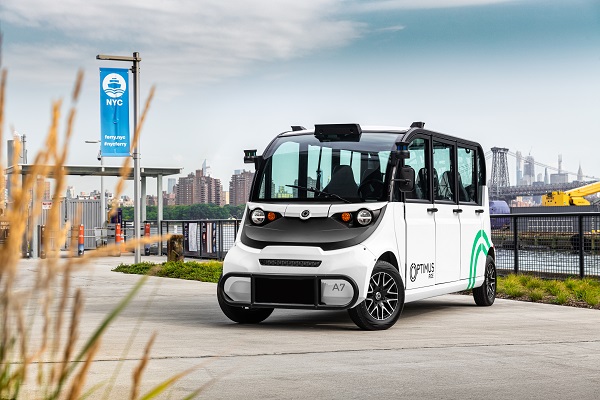LiDAR companies continuously extend their partnerships with autonomous driving technology developers to speed up self-driving applications. Canadian LeddarTech announced the collaboration with the Flodraulic Group for autonomous applications. Velodyne Lidar, on the other hand, is providing its LiDAR sensors to Optimus Ride’s self-driving vehicles.
Flodraulic is a mobile system integrator specialized in creating full machine control and monitoring systems. The company selected LeddarTech's LeddarTM IS16 LiDAR sensors for the feature of distance and angular positioning and accurate analysis of an area of operation.
Flodraulic recently deployed 22 full machine control and monitoring systems to an agricultural machinery manufacturer, Marcrest for its automated steering system. "Flodraulic is proud to be a pioneer in LiDAR technology as a system integrator in the design and manufacture of custom solutions for the Mobile, Oil & Gas and Industrial markets by adopting LeddarTech's innovative LiDAR solutions," stated Chris Passmore, Director of Technologies at Flodraulic.
Meanwhile, Velodyne Lidar announced that Optimus Ride, a self-driving technology company, will use Velodyne’s LiDAR sensors in its entire fleet of self-driving vehicles.
Optimus Ride operates self-driving vehicles that provide passenger transportation at low speeds within defined, geofenced areas such as planned communities, campuses and self-driving zones in cities. The company’s vehicles are currently deployed in Boston’s Seaport District, and at the Brooklyn Navy Yard in Brooklyn, New York. Optimus Ride’s deployment in the Navy Yard is the first commercial deployment of self-driving vehicles in the state of New York. Optimus Ride will soon deploy at Paradise Valley Estates in California and Brookfield Properties’ Halley Rise development in Virginia.

(Image: Velodyne Lidar/Optimus Ride)
Using Velodyne sensors, Optimus Ride can locate the position of people and objects around its vehicles, as well as calculate their speed and trajectory. With that information, the vehicle’s on-board computer system determines how to drive to its destination.
“The Optimus Ride fleet showcases how Velodyne’s intelligent LiDAR sensors are helping companies place autonomous vehicles on the road today,” said Mike Jellen, President and CCO, Velodyne Lidar. “Optimus Ride has an ingenious approach to providing people with access to efficient and convenient self-driving mobility – effectively solving the first-and last-mile problem.”












